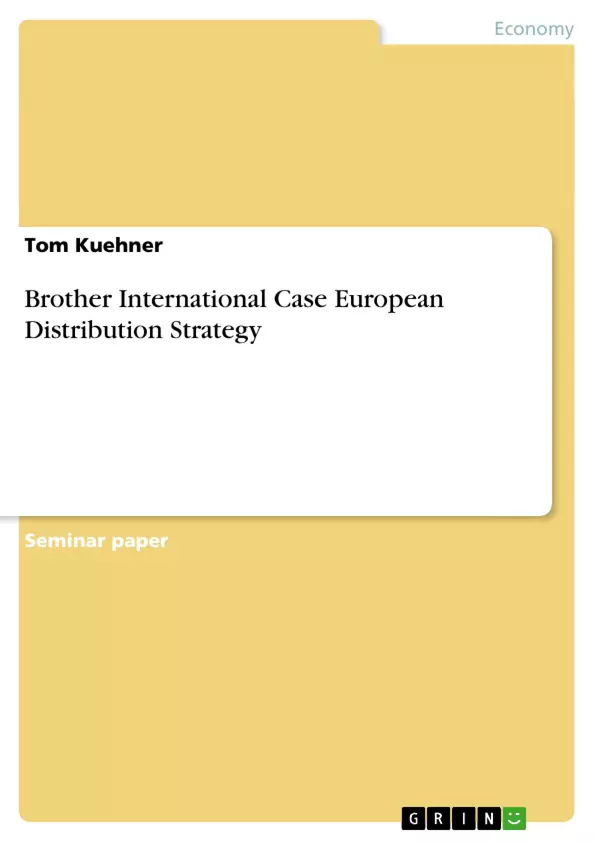The Brother International Case deals with a logistic problem. One newly hired professional
logistician should reorganize the supply of spares and parts in Europe for a Japanese Firm. In
all there are some 65000 different items from small ones like needles to big ones like motors
for industrial sewing machines. The majority of the parts come from Japan either by air or by
sea freight. There are 20 local sales offices (LSO:S) in 13 different European countries and
one headquarter in Manchester, through which all the orders to Japan were delivered till now.
The LSO:s act as independent profit centers.
In the following text I will describe how the logistician could reorganize the distribution
system, how the stock should be controlled, which information are needed to realize the
reorganization and what problems could occur when trying to implement it. At the moment the LSO:s send their orders daily to the BIE headquarter (hereafter called BIE)
which bundles the orders and send them to the factory in Japan. The factory will than send the
goods directly to the LSO:s. The average lead time by sea freight is 50 days and 20 by air.
The air transport was originally provided for emergency cases. Because of the bad
organization or forecasts many emergency orders were duplicates of earlier routine orders
which didn’t arrived in time. The emergency orders are produced and send with highest
priority leading to a bigger backlog of the normal orders. Therefore the share of air transports
climbed up to some 70-90% .
This is obviously a sub optimal solution through air transports are much more costly than sea
freight. In addition the ordered sizes are smaller than they may need to be, because each LSO orders their products independently. Even the time advantage of air freight is not fully used
since in average the orders need still 20 days! [...]
Inhaltsverzeichnis (Table of Contents)
- Which items should be stored and where in the distribution system should they be stored?
- Analyze of the parts in analogy to the Pareto law
- Four different strategies for storing products
- To what extent should the inventory control continue to be decentralized to the LSO:s?
- What information will be needed to support your proposals to the previous questions?
Zielsetzung und Themenschwerpunkte (Objectives and Key Themes)
This case study examines the logistical challenges faced by Brother International in managing spare parts distribution in Europe. The primary objective is to propose a reorganization of the supply chain to improve efficiency and reduce costs.
- Optimizing Spare Parts Inventory Management
- Centralized vs. Decentralized Inventory Control
- Analyzing Product Demand and Stock Turnover
- Utilizing Data for Forecasting and Inventory Planning
- Reducing Transportation Costs and Lead Times
Zusammenfassung der Kapitel (Chapter Summaries)
Which items should be stored and where in the distribution system should they be stored?
The chapter analyzes the current inventory management practices and identifies inefficiencies. It proposes a new strategy based on Pareto's Law, categorizing products based on demand and value. The analysis highlights the need for central warehousing, direct shipments to LSOs, and a focus on efficient transportation.
To what extent should the inventory control continue to be decentralized to the LSO:s?
This chapter advocates for complete centralization of inventory control. It proposes the establishment of a central stock (CS) connected to a computer network for real-time data sharing. The CS will manage orders, release goods, and provide data to the factory for better forecasting and lead time reduction.
Schlüsselwörter (Keywords)
This case study centers around the themes of inventory management, logistics, spare parts distribution, central warehousing, decentralized inventory control, demand forecasting, transportation cost optimization, and lead time reduction.
- Citar trabajo
- Tom Kuehner (Autor), 2003, Brother International Case European Distribution Strategy, Múnich, GRIN Verlag, https://www.grin.com/document/18075



